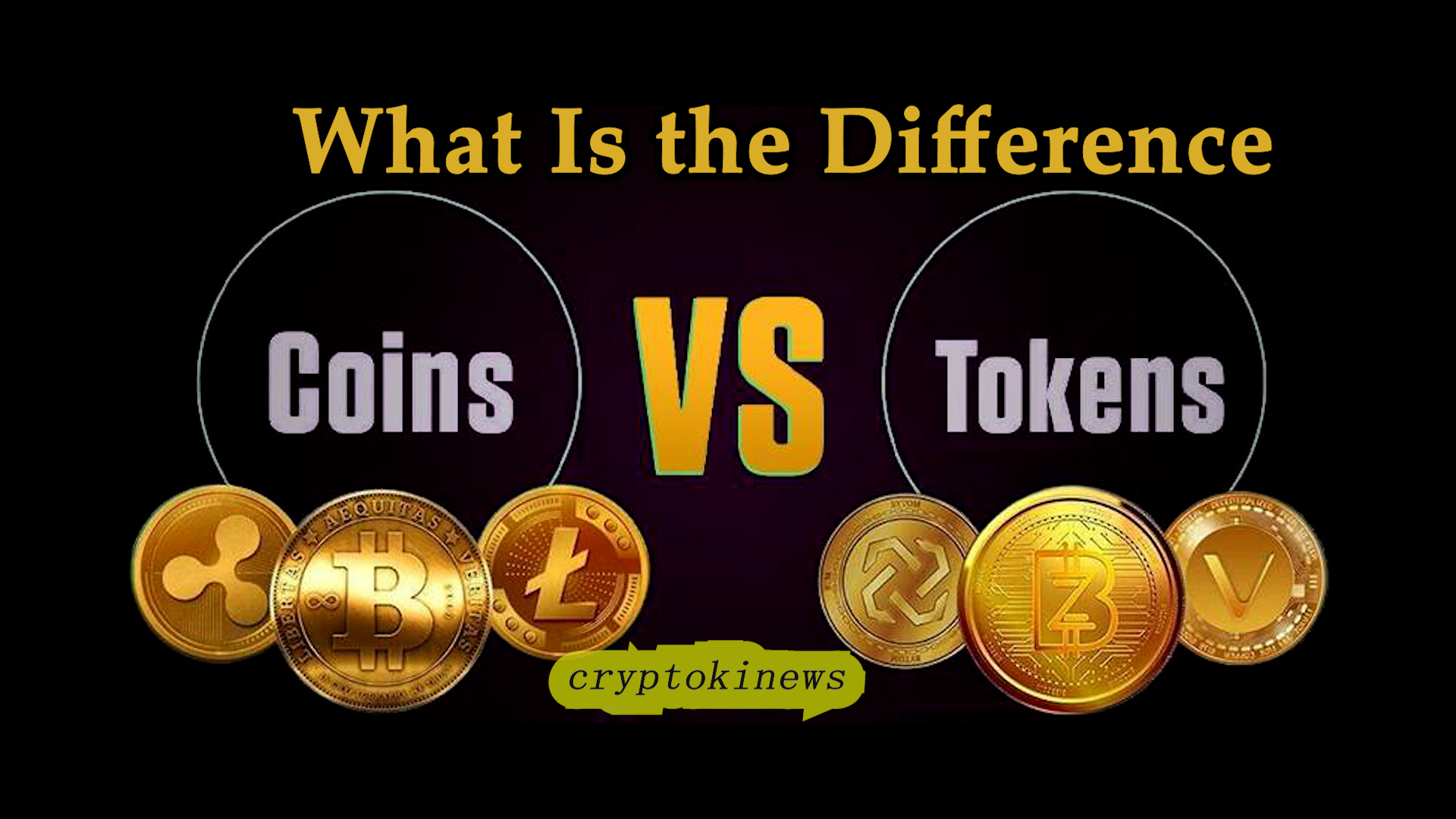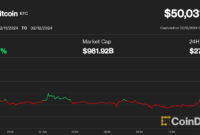One concept in the world of blockchain that commonly causes confusion is that of coins and tokens.
What’s the difference between a coin and a token? The terms often seem to be used interchangeably, and this can be a major source of confusion for newcomers to the space. In this article, we’ll take a look at the differences and what they mean for ordinary users of this technology.
What is Token?
A token is any digital asset created on the blockchain. It is usually issued or minted on another blockchain, often existing alongside several other tokens that belong to different projects.
Anyone can easily create a crypto token by writing a bunch of computer codes or even using automated tools.
What are tokens used for?
Tokens have a much wider range of possible use cases compared to coins. Tokens can represent lots of things, like prepaid credit for an API, a piece of artwork, or an education certificate.
However, tokens, unlike coins, are not money, and they are not an integral part of blockchain’s security model (they’re not used to reward miners). That’s why blockchains like Ethereum also have their own coins, separate from tokens.
What is Coin?
A coin is a cryptocurrency that runs on its blockchain. It is also referred to as the “native token” of the blockchain and often serves as a way for projects to pay transaction fees while building out their applications on the same blockchain.
Building out a blockchain requires many human and financial resources (millions of pounds), meaning that not everyone can launch a coin. However, anyone can create a crypto token and name it anything they want (LOL).
What are coins used for?
There is no added functionality for these coins — they exist only to be stored or traded as a form of currency. You can mine them, store them in your wallet, and use them to buy and sell things, but that’s pretty much it.
Differences between Coins and Tokens
There are some basic yet essential differences between coins and tokens ;
- Structure: Coins are digital financial assets; they are actual currencies and are capable of being exchanged and used for trading purposes. Tokens are also digital financial assets but rather than being the actual financial assets like the coins they act as a representation of the actual financial assets.
- Infrastructure: Each coin has its own independent blockchain, distinguishing it from any other coin. While the same can not be said for tokens, tokens are built upon and entered into the same blockchain.
- Creation: Most of the coins use the basic framework of a bitcoin along with some additional coding and changes to the framework to introduce new and unique features so as to differentiate it from bitcoin or any other coin whose framework has been used. All the programming and coding is done from the scratch. Purpose of such a creation is to improve upon the existing technology, making it more efficient. While for creating a token no changes to the programming or additional coding is required, all the tokens use the same codes for their entry into a blockchain.
- Ease and Difficulty of Creation: Since, for the creation of cryptocurrency coins there is a need for programming and coding from the scratch; hence, the level of difficulty of creation is higher as compared to tokens, which use the same set of codes and programming for their creation.
- Platform for Operation: Coins are so programmed that it is in their nature to exist independently. Coins can be used for trading as well as a measure of exchange and a unit of measure for digital financial assets. Tokens on the other cannot exist independently and are not the direct financial assets rather mere representation of assets. They are based upon other platforms.
How are coins and tokens used and how does this differ?
The key differences here are in the crypto coins and crypto use-cases.
Like coins, tokens can be used as a means of exchange in finance. They can also be designed for a number of other functions on platforms they are built on, including:
- Digital assets – digital art, music and gaming items
- Governance mechanisms – holders can access voting rights for protocol upgrades and other decisions
- Physical assets – giving deeds to real estate and tangible commodities like art
- Dapps – accessing digital applications and services on a blockchain
- Digital user identifies – where the unique cryptographic codes of tokens can be used to verify access to age-restricted, health and government services
- The main purpose of tokens is to encourage engagement within a blockchain network’s community.
Coins, on the other hand, have many use-cases in finance, including:
- Store of value – offering alternatives to conventional banking through decentralised transactions; which help the movement of cash without the need of a centralised ledger
- Digital cash – exchanging money for digital credits that can be used in electronic purchases
- International transfers – where real-time international transactions are simplified as they do not need centralised counterparty approval or clearance
So, there you have it, while coins and tokens are similar they do differ when it comes to how they can be used.
Popular cryptocurrency coins and tokens
Now that we’ve run through the similarities and differences between coins and tokens, let’s take a look at some real-world examples. The tables below show the 10 largest coins and 10 largest tokens in terms of market cap at the time of writing.
Coins
| Name | Market cap | Circulating supply |
| Bitcoin (BTC) | $138,503,657,560 | 16,853,612 BTC |
| Ethereum (ETH) | $78,782,955,051 | 97,494,487 ETH |
| Ripple (XRP) | $29,540,703,92 | 39,009,215,838 XRP* |
| Bitcoin Cash (BCH) | $22,320,941,994 | 16,956,950 BCH |
| Cardano (ADA) | $9,052,488,532 | 25,927,070,538 ADA* |
| Litecoin (LTC) | $8,104,684,548 | 55,130,533 LTC |
| NEO (NEO) | $7,220,395,000 | 65,000,000 NEO* |
| Stellar (XLM) | $6,522,701,173 | 18,432,165,992 XLM* |
| IOTA (MIOTA) | $4,931,136,880 | 2,779,530,283 MIOTA* |
| NEM (XEM) | $4,867,946,999 | 8,999,999,999 XEM* |
Tokens
| Name | Platform | Market cap | Circulating supply |
| EOS (EOS) | Ethereum | $5,411,246,133 | 657,116,921 EOS |
| TRON (TRX) | Ethereum | $2,381,274,610 | 65,748,192,476 TRX |
| Tether (USDT) | Omni | $2,245,342,845 | 2,217,140,814 USDT |
| VeChain (VET) | Ethereum | $1,981,611,785 | 466,191,394 VET |
| ICON (ICX) | Ethereum | $1,634,255,971 | 381,495,014 ICX |
| Populous (PPT) | Ethereum | $1,266,633,039 | 37,004,027 PPT |
| OmiseGo (OMG) | Ethereum | $1,189,326,349 | 102,042,552 OMG |
| Status (SNT) | Ethereum | $738,515,480 | 3,470,483,788 SNT |
| Aeternity (AE) | Ethereum | $662,409,626 | 233,020,472 AE |
Conclusion
You should now understand what is meant when someone says digital “coin” and digital “token”. It wasn’t that confusing after all, was it?
You should now know the simple definition of both a coin and a token: coins are native to their own blockchain. Whilst tokens have been built on top of another blockchain, like Ethereum, NEO, or Waves.
You should also know the most common uses for both coins and tokens. Coins are most often used simply as money; however, some coins do have other uses. These include being used to fuel applications, being used as a stake to validate a transaction on a network, or being used to fuel smart contract and token transactions.
Meanwhile, tokens serve a different purpose. If they were created to be used on a dApp, then their purpose will depend on the application itself. In some cases, they are for features such as voting rights. In other cases, they are used for transactions on the dApp (like Civic) or to reward the users with things like discounted fees, etc. (like Binance).
You’ve been given lots of examples of both coins and tokens to help you develop a clear understanding of what we mean by each term.
So, now that you know the coin definition and token definition, think about your favorite cryptos… are they coins or tokens? Ask me if you’re unsure and I’ll confirm which they are!



